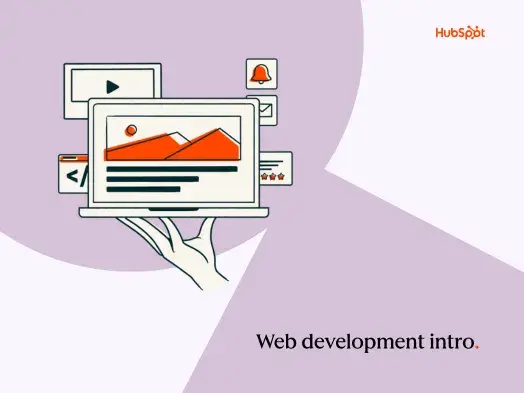Remember: Your website is your digital identity. Coding can help you build a presence that’s in line with your brand and showcases your mission. Keep your goal in mind as you work through the website creation process. Now, Let's get into it.
Table of Contents
- Building a Website
- How to Code a Website
- Next Steps in Building Your Website
- Frequently Asked Questions About Coding a Website
- Create Your Website Today
Building a Website
When it comes to building a website, I’ve found that there are two main approaches:
- Using a website builder.
- Coding from scratch.
Website builders offer an easy way to create a site, with premade templates and drag-and-drop modules. This method can help you create your website quickly. Meanwhile, coding from scratch offers you complete creative control over the site that you build. You can add amazing features and unique layouts — the only limit is your technical know-how.
Below, I’ll explore these two methods so you can decide which one is the best fit for you.
Website Builders: The Quick and User-Friendly Route
Website builders are tools that let users create a website without needing to write a single line of code. They mostly involve dragging and dropping functionality and using pre-designed templates. I find that this process requires little to no technical expertise.
CMS platforms like HubSpot's Content Hub offer user-friendly interfaces, which are great for beginners. Many CMS platforms offer drag-and-drop capabilities so that you can easily position elements (e.g., a button) where you want them on the page.
While technical knowledge isn't a must, understanding the basics of HTML and CSS can be incredibly empowering and offer more customization options. If I’m using a website builder, I may want to add extra functionalities. I can then access the source code and make changes to add those extra features.
Start building your website with HubSpot's Content Hub.
Coding From Scratch: The Road to Customization
Coding from scratch is a comprehensive process, requiring technical expertise and knowledge of HTML, CSS, and JavaScript. The process can take weeks or months, depending on how many page types you want to create. You’ll also need to test your results with customers and tailor the experience based on their feedback.
Learning to code gives you complete control over your website. You're not limited to the templates or features of a website builder. I find this path incredibly empowering because of the greater customization and unique designs I can build. However, if I just learned how to code, I would be pulling my hair out.
Website Builders vs. Coding From Scratch
Here is a table summarizing the major differences between website builders and coding a website from scratch.
|
Aspect |
Website Builders |
Coding from Scratch |
|
Ease of Use |
Beginner-friendly; no coding skills required. |
Requires knowledge of HTML, CSS, and JavaScript. |
|
Customization |
Limited to pre-designed templates and drag-and-drop features. |
Full control over design, layout, and functionality. |
|
Learning Curve |
Minimal; ideal for beginners or non-technical users. |
Steeper; requires time to learn coding and web development principles. |
|
Time to Build |
Fast; websites can be built in hours or even minutes. |
Slower; building a website from scratch takes more time and effort. |
|
Technical expertise |
No technical expertise is needed. |
Requires technical knowledge and problem-solving skills. |
If you're in a hurry or not keen on diving into code, check out our list of the best free website builders. They're a great starting point.
However, if you‘re up for a challenge and want to craft a site that’s truly your own, then coding is the way to go. If you’re ready to learn some code, let’s walk through this process together.
How to Code a Website
1. Define your website purpose and goals.
Defining my website's purpose and goals is the first and crucial step I take when coding a website. In this step, I think about the kind of website I am building and what visitors would expect from the experience. For example, a blog would look very different than a professional portfolio website.
This step helps me plan the website's structure. I can consider what features I would need to create a remarkable user experience.
Pro tip: I recommend writing down your audience personas. What demographics are more likely to visit your site? How tech-savvy are they? What key features will they need to take action on (e.g., contact forms, CTAs, important emails)?
2. Choose the right tools.
After I know my purpose, I can pinpoint the tools I need to make my site come to life. At this point, I would decide whether to code from scratch or use a website builder. If a project requires little customization or if the site admins have little coding experience, I’ll opt for a builder.
When I first started as a new developer, picking tools such as a code editor felt like a maze. It's like finding that perfect pair of running shoes — the right fit makes the run smoother.
I remember the satisfaction when I found Visual Studio Code. It offers syntax suggestions so you can avoid simple typos that cause errors. On top of that, Visual Studio Code autocompletes closing tags for HTML and adds visual markers to your files so that you can easily tell different pieces of code apart.
Below, I highlighted the difference between a regular text editor and a code editor. The code works the same in both documents, but one is much easier to understand at a glance than the other.
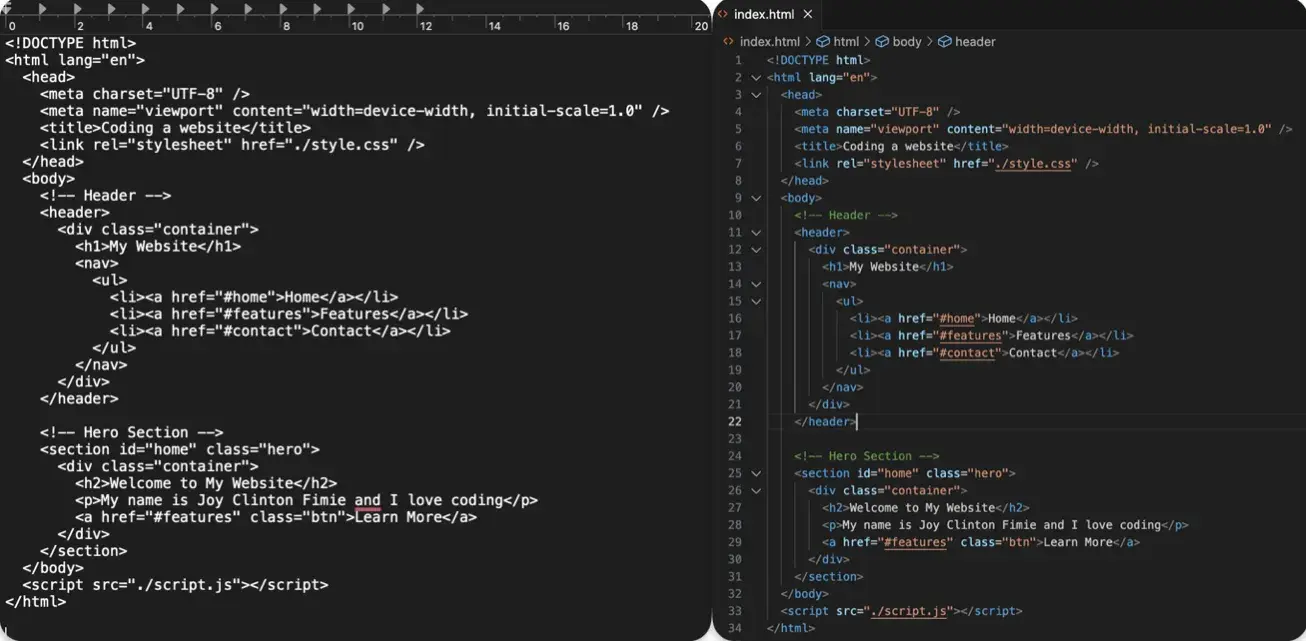
You also need to pick the right web browser. Personally, I just advise web developers to use Google Chrome because of its powerful developer tools that make inspecting and debugging code very easy. But, the choice is yours.
3. Learn the basics of HTML, CSS, and JavaScript.
In learning how to code a website, you must learn the fundamental technologies.
- HTML: For structure (e.g., headings, paragraphs).
- CSS: For styling (e.g., colors, fonts).
- JavaScript: For interactivity (e.g., buttons, animations).
These languages are the building blocks of every website, and learning them can be very beneficial in the long run. That’s especially true if you are like me and have a passion for building websites.
However, these are not the only languages that you can use to code a website. Other common languages for frontend and backend web development include PHP, Python, Ruby, C#, and others.
As you upgrade your knowledge, you might want to start learning some of these other languages. But at the beginning, I recommend just using HTML, CSS, and JavaScript because they're the most common ways to code a website.
Hubspot’s Website blog has a number of useful resources that can help you level up your coding game.
4. Set Up Project Folder
Setting up a project folder for a simple website isn't so complicated. We start by creating a folder on our computer and opening it with our code editor.

Next, we create files for the three core technologies:
- HTML File: Click the “New File” button and name it index.html. Remember, “.html” is the key here. It‘s like telling your browser, “Hey, I’m a web page!”
- CSS File: Create another file and name it style.css. I usually call mine “style.css,” but feel free to name it whatever you like. The important part is the “.css” extension.
- JavaScript File: Add a third file and name it script.js. Also, feel free to name this whatever you want, but the “.js” part is a constant.
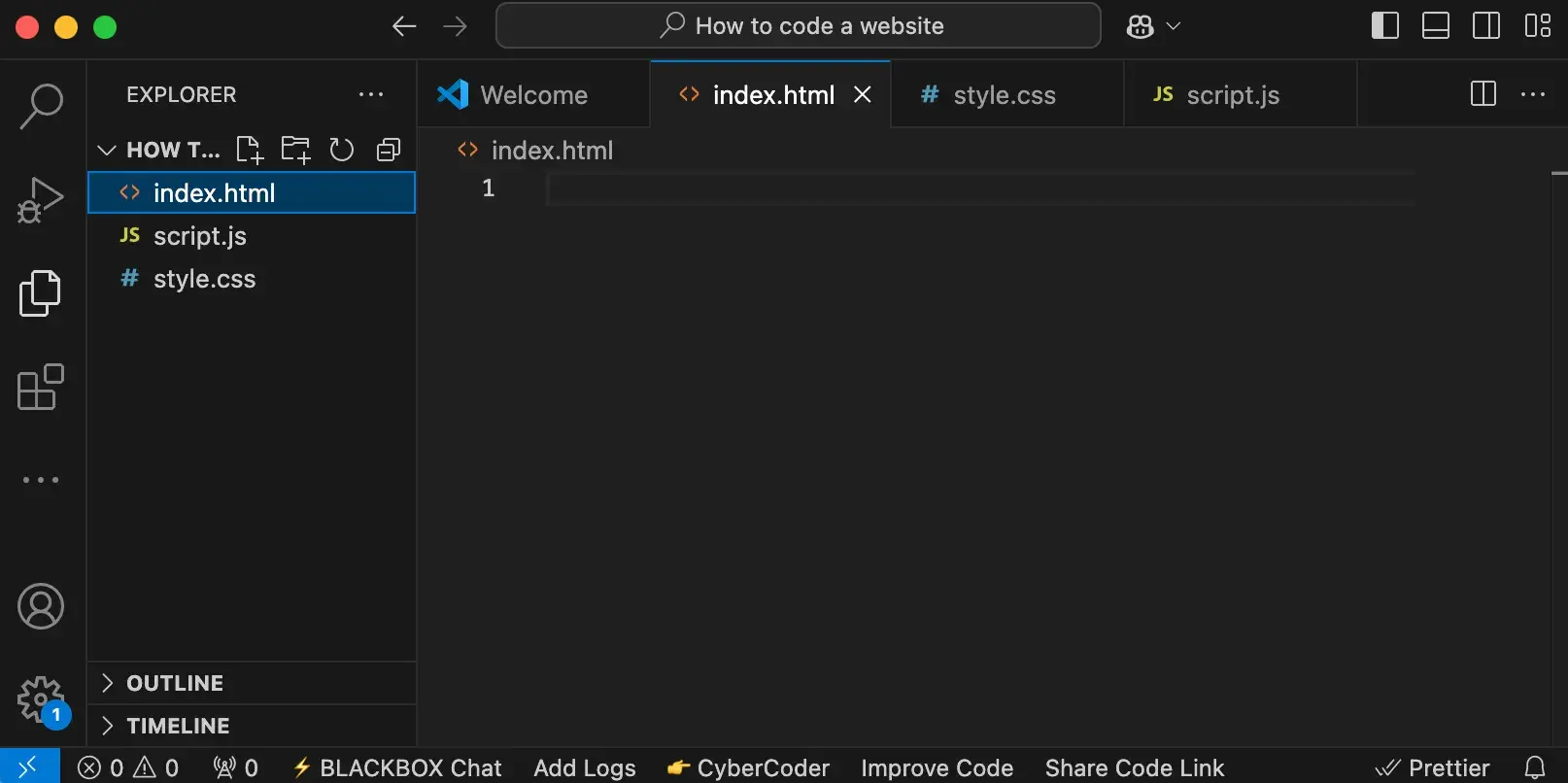
These files will serve as the foundation for our website, allowing us to organize your code efficiently.
5. Build the structure with HTML.
Now that we have the right tool for the job and understand our goal, it’s time to dive into the reason you’re here: coding.
To get started, let's type the exclamation mark (!) in your HTML file and hit Enter. We get this boilerplate of code that gives us a solid foundation to build on.

Let's review each of these pieces briefly:
- <!DOCTYPE html>: This is a declaration to the browser that this is an HTML document type that will tell it how to process our code.
- <html lang=“en”>: This opening tag wraps all of our HTML so the browser knows where our code starts and where it ends (note the closing </html> tag).
- <head>: This section doesn't show up directly on the web page but holds important info like our page title, also known as our metadata. From the image below, you can see the title is “Coding a website.” We can set the title to whatever you wish.

- <body>: This is where all our content lives. We'll add elements to this next.
Pro tip: If you're not as familiar with HTML syntax, I recommend that you explore our HTML guide as a way to brush up on your skills before continuing.
Add content to your body.
Time to add some personality! I've gone ahead and added content to our web page so we have something to look at. You can see the updated HTML under the <body> on the left and what the user will see on the right.
See the Pen How to Code Website Example: Basic HTML Doc by HubSpot (@hubspot) on CodePen.
Pro tip: The order of the attributes inside our HTML tag does not matter as long as they are all inside the tag.
Check your work
The moment of truth: If you‘ve made it this far, you’re probably excited to see our hard work on the big screen (aka web browser). The simplest way to do this is to return to our File Explorer and right-click our HTML file:

Once we‘ve selected our web browser of choice (I recommend Chrome, but any will work), we should see our HTML file displaying like it’s a live web page. Don't worry; only we can see it for now.

Pro tip: If you make additional changes, you will need to save your file and then refresh the page to see them take effect in the browser. This will be more relevant when I review how to change the aesthetics of our page in the next section.
If you prefer visual learning, watch this great explainer on creating a basic HTML website.
6. Style the website with CSS.
Now, let’s give our website its unique style with CSS. Imagine our HTML as a house’s structure; CSS is what turns this structure into a home with color and personality.
Pro tip: If you're unfamiliar with CSS, our CSS guide can help you learn the finer points of properties, syntax, selectors, and specificity.
Adding CSS Rules
Below is the CodePen of our website with the CSS rule added:
See the Pen How to Code Website Example: More CSS Rules by HubSpot (@hubspot) on CodePen.
To make our CSS styles apply to our HTML, we need to link them. This is done with a simple but crucial line in our HTML file‘s <head> section. Here’s how it’s done:
<link rel=“stylesheet” href=“style.css”>
Once linked, our web page will start to reflect the styles we defined in our CSS file. I like to think of it like coloring in a black-and-white drawing.
So, let’s work through an example. I remember the first rule I ever wrote was to change the text color. It felt like a magic wand.
Here‘s an example: This rule targets all paragraph elements (<p>) in your HTML and turns their text color red. It’s amazing how a bit of color can transform a page.
- p { color: red; }
Pro tip: Remember, for any specific styles you want to apply using classes or IDs in your CSS, you'll need to add those classes or IDs to the corresponding elements in your HTML.
7. Make your website responsive.
To understand web responsiveness, we will turn once again to a metaphor. On one hand, we have a pond. The water inside the pond is always the same shape because the edges of the pond never change. On the other hand, we have a stream. The edges of the stream are always changing as it flows, and the water is always expanding and narrowing to fit that shape.
I like to think of static and responsive websites in the same way. The static website does not react to a change in the browser's size. Its contents will always be the same shape. Meanwhile, the responsive website constantly adapts to different browsers and screen sizes.
Until now, we have created a static website. The text elements will resize by default, but other elements will keep their original shape and size no matter how the display changes.
Meta Viewport Tag
Why does responsiveness matter? The first time I viewed my site on a phone and had to zoom in to read anything, I knew something had to change. That's when I learned about the <meta name=“viewport” content=“width=device-width, initial-scale=1”> tag.
Add this tag to your HTML's <head>. It ensures that your site scales correctly on any device.
Media Queries
Media queries are one way to add responsiveness to my site using custom CSS styles. They are applied using the @media at-rule.
Here is the syntax for adding a media query:
@media (max-width: 480px) { }
With this syntax, I can specify the condition under which my media queries will be applied. The condition is defined inside the parentheses. In this case, the styles will be executed only if the screen width is 480 pixels or smaller.
Let’s add some media queries to make our site responsive.
See the Pen How to Code Website Example: Media queries added by HubSpot (@hubspot) on CodePen.
Using the @media rule I applied a different style that will be executed when the screen width is 768px or less (for tablets), and also another set of styles for when the screen is 480 pixels or smaller (for mobile devices). This is to ensure we have a uniform design which is not distorted on different devices.

Fluid Design
Media queries work best if we want to keep our elements at fixed widths. An alternative approach is fluid design.
Fluid design means using relative units like percentages instead of fixed pixels. It’s like making sure your picture takes up 50% of the screen, no matter how big or small that screen is. This approach saves you from writing multiple media queries. It’s all about making your website flow like water, fitting into whatever space it's given.
8. Add interactivity with JavaScript.
JavaScript adds interactivity and dynamic behavior to your website, making it more engaging for users. Unlike HTML and CSS, which are in charge of structure and design, JavaScript is a programming language, and it adds functionality to your website. Features like dropdown menus, image sliders, or form validation are all controlled by programming language (JavaScript).
Unfortunately, it is outside of the scope of this lesson to dive deep into the syntax and mechanics of JavaScript. Instead, I will provide a pre-written program so that we can focus on implementing it within our website.
Adding JavaScript
Below is the CodePen of our website with the JavaScript added:
See the Pen How to Code Website Example: JavaScript added by HubSpot (@hubspot) on CodePen.
In our HTML, we laid down the structure for a button, which we labeled “Learn More.” With Javascript, we are able to add functionality to that button.
First, we select the button with the class btn using document.querySelector(“.btn”) and store it in the variable learnMoreBtn. Then we add a click event listener to the button, so when the button is clicked, two things happen:
- The default behavior (like jumping to another section of the page) is prevented using event.preventDefault()
- An alert pops up with the message, “Thanks for your interest! We’ll show you more about us.”
Remember, the three fundamental files are independent and will only work together when they are linked. For our JavaScript code to actually work, we need to link it to our HTML file. To do this, we go in between the body closing tag and the HTML closing tag, and we add this line of code.
<script src=“./script.js”></script>
And with that, our JavaScript should work perfectly.
9. Publish Website
Once you’ve finished coding your website, the last step is to upload your files to a hosting service so that people can visit your website. While you can open your website’s files in your web browser, other people won't be able to access your website until you upload it to a website hosting service.
If you followed this guide, you created what's known as a static HTML website, which means you can use pretty much any hosting service. Personally, I recommend using software like Hubspot, Cloudflare Pages, or Netlify, which will let you achieve fast global performance with an entirely free hosting service.
In addition to that, you'll also need a domain name for your website. If you use Cloudflare Pages, you can also purchase your domain name from Cloudflare Registrar. This is my personal approach because Cloudflare Registrar offers the absolute cheapest prices for domain names (and is also just generally a quality service). There are lots of other quality domain registrars that you can use, though.
Once you upload your website's files to the host and point your domain name to those files, you'll have a working website that you coded from scratch.
Next Steps in Building Your Website
If you have made it this far, then take a moment to congratulate yourself. You have gone from perhaps never coding before to having the foundation of a website. We've covered a lot of ground between different concepts in HTML and CSS and even touched on programming.
Now, let me share a bit about where you can go from here. This journey is far from over, and trust me, the road ahead is exciting.
Keep learning HTML and CSS.
HTML and CSS have more complexity than what we’ve covered today. These languages form the visible face of your website and are critical to your users’ experience. I’ve relinked the foundational guides to HTML and CSS below, as well as added some links to more advanced CSS topics.
You can always look for the best coding boot camps that can provide extra support to teach you HTML and CSS. It doesn't have to be pricey or even paid; there are free coding boot camps like freeCodeCamp, which I have personally worked with.
Foundational Guides:
- Ultimate Guide to HTML. A one-stop shop for everything you need to know to write HTML like a pro.
- Ultimate Guide to CSS. A one-stop shop to start using CSS to make your website wow your visitors.
Best for: Web designers and developers who want to enhance their website’s visual appeal and usability. Ideal for those aiming to create more engaging and aesthetically pleasing designs.
Advanced CSS Topics:
- Float — a simplified method for arranging HTML elements to the left, right, or center of a page.
- Grid — a rigid layout system for arranging content on a page in rows and columns that offers more customization than Flexbox.
- Flexbox — a fluid layout system for arranging content in rows or columns that is simpler to implement than a grid but offers less control over contents' positions.
- Animations —a method for adding flair to your page by animating HTML elements for different motions or visual effects.
Best for: Web designers looking to add dynamic, eye-catching elements to their sites. Ideal for those wanting to learn how to create engaging user experiences.
Learn JavaScript.
JavaScript was a turning point for me. It’s where websites start to come alive, moving from static pages to interactive experiences. Whether it’s adding a simple animation or building an entire web app, JavaScript opens up a world of possibilities. Don't be intimidated by its power; embrace it.
You can check out our main JavaScript guide here, which will also link to lots of posts on specific areas of JavaScript.
Learn Git and GitHub.
Learning Git and GitHub was like learning to save my game in the coding world. Git lets you keep track of changes and experiment without fear of losing your work.
And GitHub? It's like a social network for your code, where you can store it safely and collaborate with others. The first time I successfully merged a branch in Git, I felt like I unlocked a new level in my coding skills.
Remember, you’re just getting started. In less than three years, I went from fumbling through my first lines of HTML to guiding others on their coding journey. Stay curious, keep experimenting, and practice regularly. Coding is a journey, not a sprint. I can’t wait to see where your newfound skills take you.
Frequently Asked Questions About Coding a Website
To finish out this guide, I want to cover some common questions that you might have about coding a website.
1. How long does it take to code a website?
It varies greatly based on complexity. For a basic homepage, it might take a few hours, while an ecommerce site could take weeks or more. Remember, a website can evolve over time; starting simple is perfectly fine.
2. How hard is it to code a website?
If you just want to code a basic website, you can probably pick up the fundamentals in a few weeks or months, assuming you're starting from scratch. However, coding more complex websites and applications will take more knowledge and practice.
I recommend starting simple and building in more complexity as your knowledge grows.
3. Can I code my own website for free?
Yes, you can absolutely code your own website for free. You can find plenty of free code editors, which is all you really need to code your site. When you're finished, you can also find free hosting for HTML websites, such as Cloudflare Pages. The only thing you might need to pay for is a domain name, which costs around $10 per year.
4. How do I make my website public?
Once you‘ve finished coding your website, you can make it public by adding your website’s files to a website hosting service. You could use a static website hosting service like Cloudflare Pages or a more robust hosting service if you need server-side processing.
5. Can I make a website without coding?
If you feel overwhelmed by coding your website from scratch, it's absolutely possible to build a great-looking website without code. I recommend using a website-building tool like HubSpot Content Hub, WordPress, and so on, as these tools let you set up everything without code.
Create Your Website Today
While there are many different ways to build a website without code, I still think there's value in learning how to code a website yourself. Understanding how HTML, CSS, JavaScript, and other fundamental technologies function will be invaluable on the web.
Learning by doing is one of the best ways to teach yourself new skills, so I encourage you to play around with coding your own website, even if it's just something very basic, like my landing page example above.
If you need to build a more robust website with marketing functionality and a content management system, that's when I think you might want to turn to a dedicated website builder tool.
HubSpot's free website builder offers all that functionality and more. Best of all, you can still take advantage of your new coding skills with its flexible templating system.
Editor's note: This post was originally published in November 2021 and has been updated for comprehensiveness.
Website Development



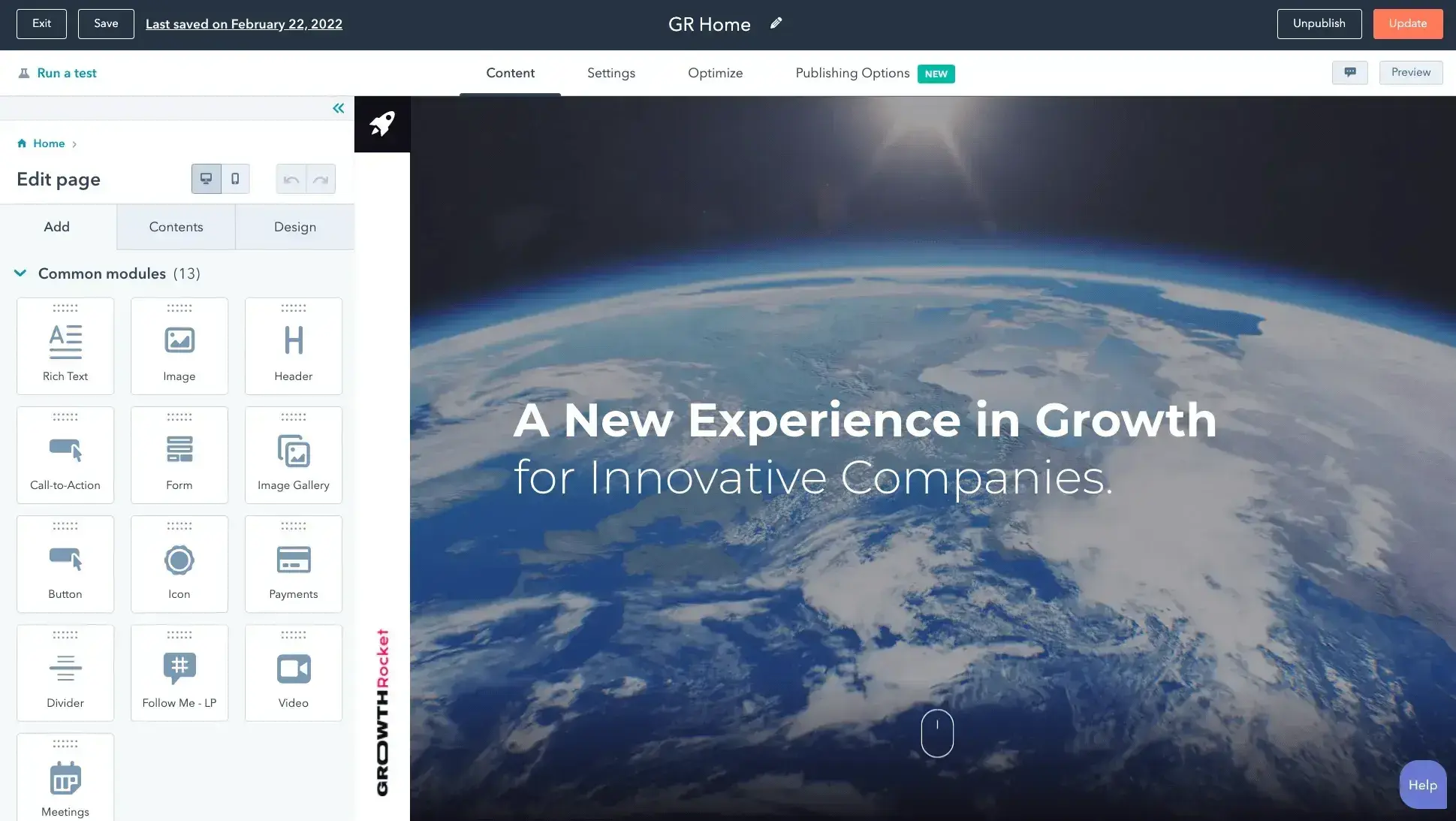
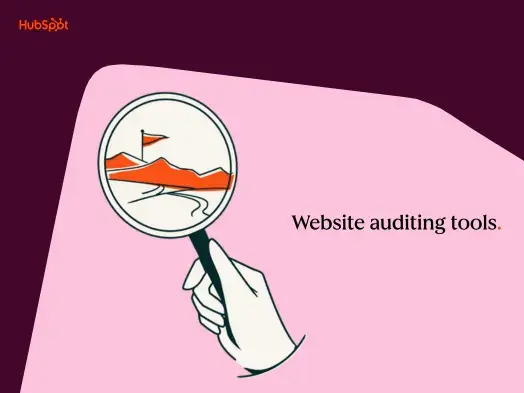

![How to make a website with user accounts and profiles [with WordPress, Wix, and more]](https://53.fs1.hubspotusercontent-na1.net/hubfs/53/%5BUse%20(3).webp)
![How to build a Google Site that looks good and drives business [templates & examples]](https://53.fs1.hubspotusercontent-na1.net/hubfs/53/Website%20Redesign%20Terms.png)



